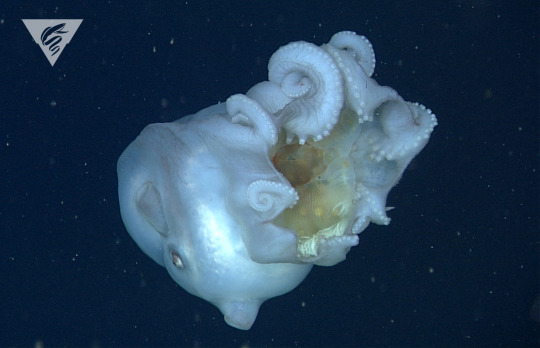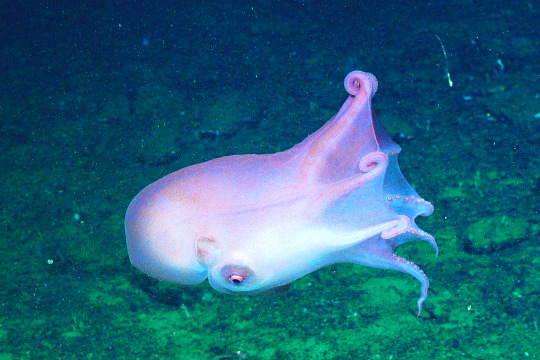#haliphron atlanticus
Explore tagged Tumblr posts
Text
Rude car drives up to you, honks at you, then drives away
This is so bad I fully blame the fact that I couldn’t find good car audios
#nintendo#splatoon 3#splatoon 2#splatoon#7 arm octopus#haliphron#haliphron atlanticus#octopus#shitpost
22 notes
·
View notes
Text

Daily Cephalopod #72
#octopus#seven-arm octopus#haliphron atlanticus#daily cephalopod#cephalopod#marine life#ocean creatures#ocean critters#marine biology#zoology#animals#biology#marine animals#cephalopods
319 notes
·
View notes
Text

The seven-arm octopus (Haliphron atlanticus) was spotted in shallow water off Tongue Point in Washington state on Sept. 8.
(Image credit: Eric Askilsrud)

Seven-arm octopuses actually have eight arms like every other octopus.

#eric askilsrud#photographer#seven-arm octopus#haliphron atlanticus#marine life#tongue point#washington#nature
58 notes
·
View notes
Text

Something misnamed this way comes.
#gaming#virtual photography#beyond blue#seven armed octopus#seven-arm octopus#Haliphron#Haliphron atlanticus
0 notes
Text

1 note
·
View note
Text

Seven-arm Octopus (Haliphron atlanticus), family Alloposidae, Salish Sea off the coast of WA, USA
This is one of the largest octopus species, with an estimated total length of 3.5 meters (11 feet) and a mass of 75 kg (165 lb)
This octopus does have 8 arms, but the hectocotylus (a specially modified arm used in egg fertilization) is coiled in a sac beneath the right eye, and is not easily seen.
This species is rarely seen by humans.
photographs by Eric Askilsrud (scuba.eric_)
5K notes
·
View notes
Text
This octopus is a sucker for jellies 🐙✨️
The seven-armed octopus, Haliphron atlanticus, has only been observed by MBARI’s remotely operated vehicles three times in more than three decades. In this species, the male keeps the hectocotylized arm hidden so it appears to be missing, thus the common name.
During a sighting in 2016, the octopus was observed holding the bell of an egg-yolk jellyfish (Phacellophora camschatica) in its arms. The octopus had apparently eaten most of the tissue that would have been hanging down from the bell, but the ring of jellyfish tentacles was intact. It looked as though Haliphron had not only made a meal of the jelly but was hanging onto it, perhaps for defense or for help in catching prey. Haliphron is a member of the family Argonautidae, and now four genera in the family have been observed having some kind of relationship with salps or jellyfish—living on, in, or with the jelly.

We are still learning about the diverse communities that live in the deep sea, and especially what the animals that thrive in these habitats eat. Interestingly, many large animals that we know more about, like whales, manta rays, and ocean sunfish, eat small or gelatinous plankton—drifting prey that are easier to catch than fast-swimming fishes. This large octopus is another example of this amazing adaptation to life in the open ocean: live slow, grow big.
225 notes
·
View notes
Text
Uncharismatic Fact of the Day
How many arms does the seven-arm octopus have? Despite it's name, this species (like all octopi) has eight! The eighth 'arm' is actually modified appendage called a hectocotylus that males use to fertilize the eggs of females. The hectocotylus is typically keept coiled in a sac under the males' right eye, making it easy to overlook when counting their arms.

(Image: A female seven-arm octopus (Haliphron atlanticus) by the Schmidt Ocean Institute)
If you send me proof that you’ve made a donation to UNRWA or another organization benefiting Palestinians, I’ll make art of any animal of your choosing.
#Seven-arm octopus#Octopoda#Alloposidae#octopus#octopi#cephalopods#mollusks#invertebrates#uncharismatic facts
93 notes
·
View notes
Text
That's like saying a spider is an octopus, because it's wrong. Lots of things have eight limbs that aren't octopi, and some things with fewer than eight limbs are octopi. Exhibit A:

(Exhibit B is Haliphron atlanticus)
Octps

2 wng
2m
4l eh
Eigt
192 notes
·
View notes
Photo




haliphron atlanticus for @the100kinkmeme
When Clarke is forced to move in with a guy she’s never met, she’s relieved to find out he’s completely normal. Except months later she discovers he’s not as normal as she thought--he’s a shape-shifting tentacle monster.
rated e, ~4.4k words
(link in reblog)
38 notes
·
View notes
Text

At the bottom of the world.
1 note
·
View note
Note
Tricker treat!
Happy SAMHAIN!!!


Seven-arm Octopus (Haliphron atlanticus), family Alloposidae, in the deep sea of the coast of southern California, USA
This is one of the largest octopus species, with an estimated total length of 3.5 meters (11 feet) and a mass of 75 kg (165 lb)
This octopus does have 8 arms, but the hectocotylus (a specially modified arm used in egg fertilization) is coiled in a sac beneath the right eye, and is not easily seen.
This species is rarely seen by humans.
photographs via: Schmidt Ocean Institute
413 notes
·
View notes
Video
tumblr
Moment of zen with a seven-armed octopus. 〰️
Haliphron atlanticus, also known as the seven-armed octopus, has been observed by MBARI’s remotely operated vehicles less than five times in over 30 years. In this species, the male keeps the hectocotylized arm hidden so it appears to be missing, which is where its common name comes from. Researchers have often observed individuals of this species holding the bell of an egg-yolk jellyfish (Phacellophora camschatica) in their arms.
81 notes
·
View notes
Video
Haliphron atlanticus, el pulpo de siete brazos
0 notes
Video
youtube


Giant octopus wears jellyfish cape after it devours its owner
By Maria Bolevich
An elusive deep-sea giant has been filmed with its prey for the first time. It turns out it eats jellyfish and other gelatinous animals.
The octopus, Haliphron atlanticus, was filmed swimming docked on top of a medusa jellyfish, with its beak devouring its innards, while the medusa’s sticky tentacles were still hanging out of its mouth. The researchers think it might even be using the jellyfish tentacles as a handy feeding implement.
Little is known about H. atlanticus, and the researchers who filmed it using remotely operated vehicles have only seen it three times in as many decades. Most other octopuses eat more substantial prey such as fish and crustaceans, so it is a surprise to see this large species eating jellyfish...
(read more: New Scientist)
images/video: Monterey Bay Aquarium Research Insititute
3K notes
·
View notes
Text
Update from the deep sea!

Our colleagues at Monterey Bay Aquarium Research Institute (MBARI) have only seen the Haliphron atlanticus octopus three times in 27 years.
Recently they spotted one carrying an egg-yolk jelly and made a discovery about this elusive species: It looked as though Haliphron had not only made a meal of the jelly, but was hanging onto it, perhaps for defense or for help in catching prey!
youtube
#Monterey Bay Aquarium Research Institute#MBARI#octopus#deep-sea octopus#deep-sea creature#jelly#jellyfish#egg-yolk jelly#Monterey Bay Aquarium#deep sea
813 notes
·
View notes